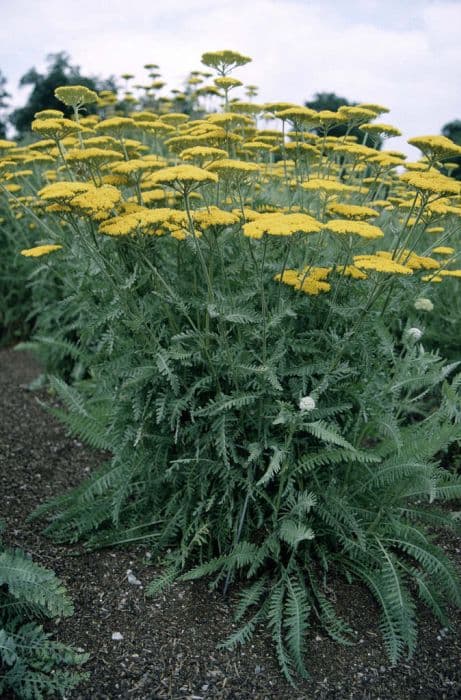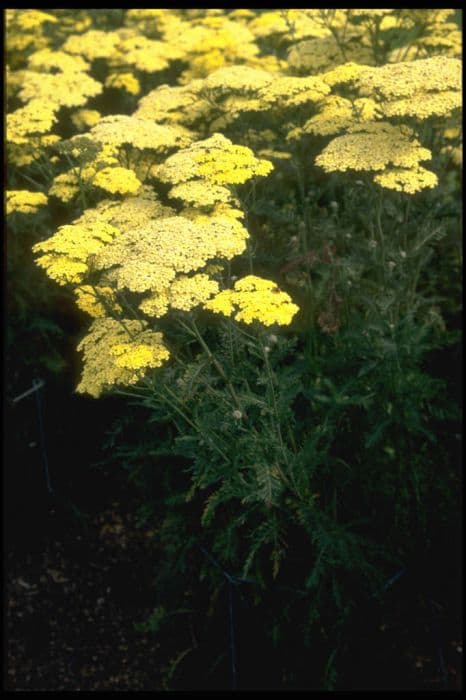Shasta Daisy Leucanthemum × superbum 'Real Neat' (Realflor Series)

ABOUT
The plant known as Shasta Daisy 'Real Neat' from the Realflor Series is a perennial with a striking appearance. It is recognized for its showy flowers which have a unique characteristic compared to traditional Shasta daisies. The blooms consist of a dense layers of pristine white petals that are neatly arranged in a radial pattern around a bright yellow center disc. This intricate petal arrangement gives the flowers a particularly full and somewhat frilly look. The contrast between the pure white and the vibrant yellow creates a dazzling display that can catch the eye from a distance. The foliage is dark green, with leaves that have a glossy texture and tend to clasp at the base, providing a lush backdrop for the vivid blossoms. The overall visual effect is one of orderly beauty and classic charm, making the Shasta Daisy 'Real Neat' a popular choice for adding a touch of elegance to gardens and landscapes.
About this plant
 Names
NamesFamily
Asteraceae
Synonyms
Shasta Daisy
Common names
Leucanthemum × superbum, Chrysanthemum maximum, Chrysanthemum × superbum, Leucanthemum maximum.
 Toxicity
ToxicityTo humans
Shasta daisy Leucanthemum × superbum 'Real Neat' is generally considered non-toxic to humans. If ingested, it is not commonly known to cause serious poisoning or adverse reactions. However, ingestion of any plant material may cause mild stomach upset or an allergic reaction in some individuals due to individual sensitivities.
To pets
Shasta daisy Leucanthemum × superbum 'Real Neat' is not known to be highly toxic to pets. However, ingestion may cause mild gastrointestinal upset in animals including vomiting or diarrhea. If a pet ingests a large amount or shows ongoing signs of distress, consulting a veterinarian is advised.
 Characteristics
CharacteristicsLife cycle
Perennials
Foliage type
Deciduous
Color of leaves
Green
Flower color
White
Height
2 feet (0.61 meters)
Spread
2 feet (0.61 meters)
Plant type
Herb
Hardiness zones
5
Native area
Europe
Benefits
 General Benefits
General Benefits- Visual Appeal: The Leucanthemum × superbum 'Real Neat' produces bright, showy flowers that can enhance the aesthetic of any garden or landscape.
- Long Blooming Period: These plants have a prolonged flowering season, offering visual interest throughout much of the summer.
- Drought Tolerance: Once established, this variety of Shasta daisy shows a degree of drought resistance, making it suitable for water-wise gardens.
- Low Maintenance: 'Real Neat' is relatively easy to care for, requiring minimal upkeep once it's settled into its environment.
- Attracts Pollinators: The blooms attract a variety of pollinators, including bees and butterflies, which are beneficial for the garden's ecosystem.
- Cutting Flower: The strong stems and long-lasting flowers make them excellent for cutting and using in floral arrangements.
- Adaptability: This plant adapts well to a variety of soil types, though it prefers well-draining conditions.
- Cold Hardy: 'Real Neat' is capable of withstanding colder temperatures, making it suitable for gardens in temperate to cooler climates.
- Resistance to Pests and Diseases: These plants have good resistance to many common garden pests and diseases.
 Medical Properties
Medical PropertiesThis plant is not used for medical purposes.
 Air-purifying Qualities
Air-purifying QualitiesThis plant is not specifically known for air purifying qualities.
 Other Uses
Other Uses- The Shasta daisy can be used in art and photography for its aesthetic appeal, often featuring in floral arrangements or as a subject of botanical illustration.
- As a natural dye, the petals of Shasta daisies can be boiled to produce different shades of yellow, depending on the mordant used.
- In education, the plant can serve as an example for studies in plant hybridization and breeding due to its cultivated origin.
- The dried flowers of Shasta daisy can be incorporated into potpourri mixes, adding fragrance and variety to the mixture.
- These daisies can be used as markers or dividers in gardens and parks, visually indicating different sections or pathways.
- In eco-friendly landscaping, Shasta daisy plants are valued for their ability to attract beneficial insects like bees and butterflies, supporting biodiversity.
- They can act as companion plants in vegetable gardens, helping to deter certain pests while attracting pollinators.
- During festive seasons, Shasta daisies can be incorporated into wreaths and other holiday decorations for a natural touch.
- Used in sensory gardens, the Shasta daisy's texture and scent provide a stimulating experience for visitors, especially those with visual impairments.
- The plant can be part of educational children's gardens, where kids can learn about the lifecycle of plants from seed to flower.
Interesting Facts
 Feng Shui
Feng ShuiShasta daisy is not used in Feng Shui practice.
 Zodiac Sign Compitability
Zodiac Sign CompitabilityShasta daisy is not used in astrology practice.
 Plant Symbolism
Plant Symbolism- Purity: As a member of the daisy family, the Shasta daisy typically symbolizes purity due to its bright white petals which are often associated with innocence.
- Innocence: Shasta daisies carry the symbolism of innocence, again, relating to their clean, white appearance evoking a sense of childlike wonder and simplicity.
- Chastity: Connected to its purity symbolism, Shasta daisies often signify chastity, embodying virtuous qualities and the idea of untouched beauty.
- Transformation: The lifecycle of daisies, which includes closing at night and reopening with the morning light, symbolizes transformation and the ability to start anew.
- Loyal Love: Daisies often represent loyal love because of their hardiness and the way they thrive in various conditions, suggesting steadfastness in a relationship.
- Patience: The Shasta daisy, like its relatives, takes time to bloom and demonstrates patience, making it a symbol for someone who is enduring a long wait.
- New Beginnings: Often given when someone is embarking on a new chapter in life, Shasta daisies symbolize new beginnings and fresh starts.
- Beautification: Planting Shasta daisies can indicate a desire to beautify one's garden or surroundings, symbolizing an appreciation for natural beauty.
 Water
WaterThe Shasta daisy should be watered deeply once a week, providing about one inch of water each time. The method of watering should be slow and thorough, allowing moisture to reach deep into the soil without causing any runoff, which can be done by using a drip irrigation system or a watering can. During hot or dry spells, you may need to water more frequently to maintain consistent soil moisture. It's crucial not to overwater, as Shasta daisies do not tolerate wet feet and too much moisture can lead to root rot. Generally, aim for about one gallon of water per square foot every seven days, adjusting as necessary for your climate and soil conditions.
 Light
LightShasta daisies thrive best in full sun, which means they should receive at least six hours of direct sunlight daily. The ideal spot for planting them would be an area that is exposed to ample morning sun with some afternoon shade in extremely hot climates, but generally full sun is preferable for the most vigorous growth and bloom production.
 Temperature
TemperatureShasta daisies are hardy and can withstand temperature variations well, making them suitable for a range of climates. They can survive minimum temperatures down to about -20°F, and maximum temperatures as high as they might typically experience in summer in most growing zones. The ideal temperature range for growing Shasta daisies, however, is between 60°F and 75°F, where they will flourish and produce abundant blooms.
 Pruning
PruningPruning Shasta daisies encourages fuller plants and more blooms. Deadhead spent flowers regularly to promote continuous blooming throughout the season. In the early spring or after the first killing frost in the fall, cut back the foliage to about 1-2 inches above the ground level. This will help maintain a tidy appearance and can prevent fungal diseases by removing old or diseased foliage.
 Cleaning
CleaningNot needed
 Soil
SoilShasta Daisy 'Real Neat' prefers well-draining soil enriched with organic matter, such as compost or peat moss, with a neutral to slightly acidic pH of 6.5 to 6.8.
 Repotting
RepottingShasta Daisy 'Real Neat' typically does not require frequent repotting and can be repotted every 2-3 years or when it outgrows its current container.
 Humidity & Misting
Humidity & MistingShasta Daisy 'Real Neat' tolerates average outdoor humidity levels well and does not require any special humidity considerations.
 Suitable locations
Suitable locationsIndoor
Place in bright, indirect light and ensure pot has drainage.
Outdoor
Full sun, well-drained soil, water when topsoil is dry.
Hardiness zone
5-9 USDA
 Life cycle
Life cycleThe Leucanthemum × superbum 'Real Neat' (Realflor Series), commonly known as the Shasta Daisy, begins its life as a seed which germinates in spring under adequate conditions of moisture and temperature. Once the seedling emerges, it develops into a rosette of leaves at the soil level, collecting energy for future growth. As the plant matures, it forms a sturdy stem and foliage, preparing for the blooming stage which typically occurs in early to mid-summer, showcasing its distinctive white petals surrounding a yellow central disk. After the blooming period, pollination occurs, often with the aid of insects, leading to the development of seed heads. As the growing season concludes, the plant enters a period of dormancy in the fall and winter, particularly in cooler climates, dying back to the ground level. With the return of favorable conditions in the following spring, the Shasta Daisy may regrow from its rootstock or self-sow from fallen seeds, repeating the cycle.
 Propogation
PropogationPropogation time
Spring-Early Summer
The Shasta Daisy 'Real Neat', a flower known for its bright white petals and sunny yellow centers, is most commonly propagated through division. The best time for this activity is either in the spring or early fall. To propagate through division, gardeners should carefully dig up an established clump of Shasta Daisy and gently separate the plant into smaller sections, each with a portion of the root system intact. These new plants can then be immediately transplanted into a well-prepared garden bed or pots, ensuring they are placed at the same soil depth they were originally growing. Watering the new plantings thoroughly is important to help establish the roots in their new locations. It's essential to maintain even moisture during the first growing season to ensure successful establishment.









